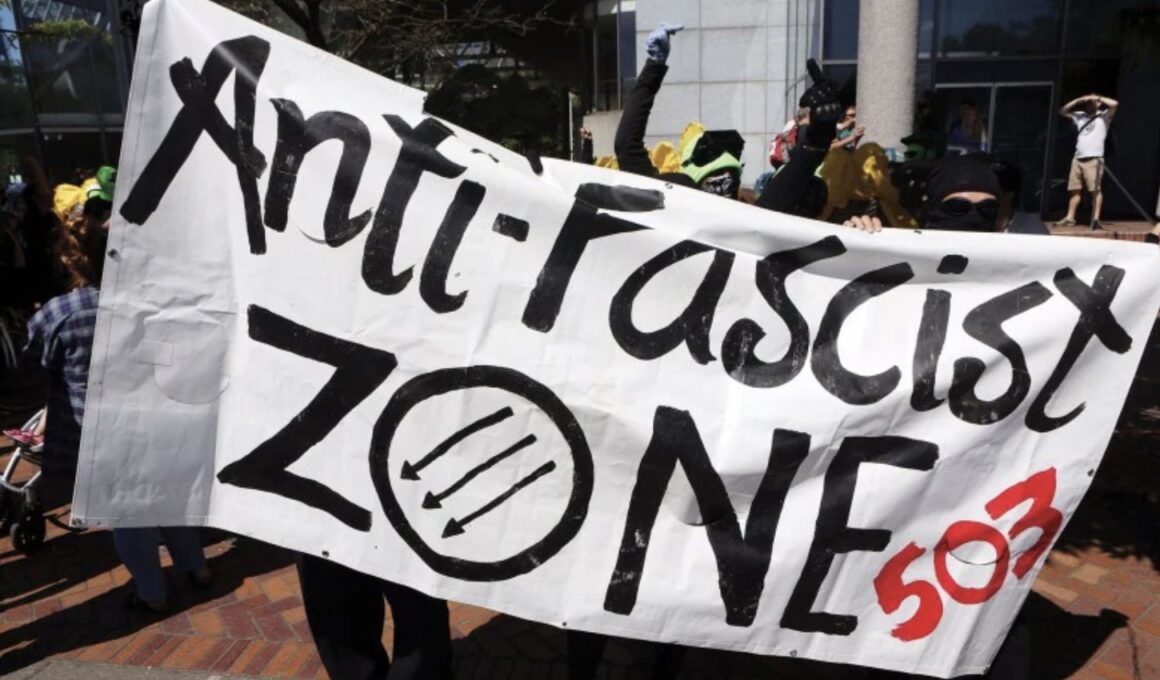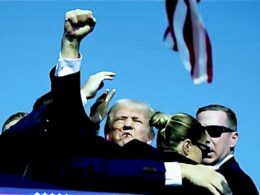Even though this is a polemic against anarchism, I need to clarify that in the context of my conditions in the United States, I don’t view everyone who calls themselves an anarchist as an enemy. The main types of anarchists who I see as a hindrance towards the class struggle are the ones in “Antifa,” because they’re the ones with the type of hyper-sectarian upbringing that’s made the state able to weaponize them against anti-imperialists.
I’ve met plenty of people which have been supportive of me and my political efforts over the years. The disconcerting thing I’ve noticed, though, is that all of them have been older. All the anarchists from the younger generations who I’ve seen—or at the least all the hardcore ones who aren’t just transitioning into communism—have acted in aggressive opposition towards anti-imperialist ideas. Palestine is essentially the only international issue that they’ve been good on, and even that’s dubious because of how much they work to divide Palestine from other anti-imperialist countries. Having been brought up in the social media age, when tribalism within the left has come to be heightened by a toxic discourse environment, these newer anarchists fit the descriptions that people like Stalin have given of what anarchism looks like. Speaking for Marxist-Leninists, Stalin wrote:
We believe that the Anarchists are real enemies of Marxism. Accordingly, we also hold that a real struggle must be waged against real enemies. Therefore, it is necessary to examine the “doctrine” of the Anarchists from beginning to end and weigh it up thoroughly from all aspects. The point is that Marxism and anarchism are built up on entirely different principles, in spite of the fact that both come into the arena of the struggle under the flag of socialism. The cornerstone of anarchism is the individual, whose emancipation, according to its tenets, is the principal condition for the emancipation of the masses, the collective body. According to the tenets of anarchism, the emancipation of the masses is impossible until the individual is emancipated. Accordingly, its slogan is: “Everything for the individual.” The cornerstone of Marxism, however, is the masses, whose emancipation, according to its tenets, is the principal condition for the emancipation of the individual. That is to say, according to the tenets of Marxism, the emancipation of the individual is impossible until the masses are emancipated. Accordingly, its slogan is: “Everything for the masses.
It’s this divergence within priorities that’s coming to make up a crucial part of the class conflict in the United States. That’s determining who stands where in the power struggle between the reactionary side, the side of monopoly finance capital, and the side that seriously seeks to defeat the ruling class.
It’s so important to recognize this because at the moment, anarchism has a significant presence within the pro-Palestine movement. With this movement’s biggest initial manifestations coming from the student element, and therefore from leftism, anarchists are prominent in the pro-Palestine struggle’s present stage. Their symbols and slogans often appear on the campus graffiti, and their groups have been going into protest circles to distribute their literature. This obviously doesn’t mean we should oppose the student protests. What it means is that it would be a mistake to embrace pan-leftism just because these protests are having a positive impact. We can’t interpret the successes of the protests as proof that we can ignore the advice Stalin gave, and trust radical liberals to help lead the struggle. Because these radlibs are capable of preventing the struggle from reaching its next stages beyond these first uprisings.
The reality of anarchism, especially in the modern United States, is that it’s prime ideological territory for the cultivation of counter-gangs. For groups that can appear revolutionary, but are being used by the state as weapons against the authentic sources of dissent. In today’s “Antifa” spaces, which are filled with anarchist ideas, it’s apparent on the surface that such sources of ideological danger towards the class struggle are common. Antifa banners frequently feature the “Three Arrows” image, which represents a call to sabotage workers revolution. (The symbol was created by Germany’s social democrats to signify their desire for crushing monarchism, fascism, and communism.) Fascist Ukraine has been able to draw from the base of anarchist Antifa militants to recruit for its proxy war against Russia. You’ll never find any Antifa branches mobilizing against the biggest institutional sources of fascism—like the U.S. war machine with its support for Nazi militias—because they’re essentially on the side of these institutions.
The left anti-communism which Parenti warned about dominates what we today call “Antifa,” and in the age of the new cold war, many of these left anti-communists have turned towards an even more radical position. It’s now normal within leftist circles to view Russia as a “fascist” state, a notion which often also extends to China because of the “Uyghur genocide” psyop. Under today’s conditions in the USA, where the communist movement was driven to the margins decades ago, it’s the default for developing radicals to get their knowledge on global affairs from the State Department. From the intelligence-tied academic centers and NGOs, which launder their propaganda through pseudo-radical language.
The “State Department socialism” that the CIA was cultivating during the 1960s and 70s has since become the main form of “leftism,” and as our class and geopolitical conflicts escalate, it’s taking on a more militant character. The elements within leftism which have been able to most easily gain a presence within the protests are ones with strong hostility towards anti-imperialists, with this hostility often having a violent nature.
The lessons we need to take from this are that 1) we must combat this imperialism-compatible leftism directly, rather than entertaining it for the sake of “left unity. And that 2) we must center our outreach not within “the movement,” but within the broader masses. These two goals are interdependent, because we can’t neutralize the threat the compatible left poses towards our mass outreach projects simply by ignoring this threat. Stalin ridiculed “The kind of people who console themselves with the thought that the Anarchists ‘have no masses behind them and, therefore, are not so dangerous.’ It is not who has a larger or smaller ‘mass’ following today, but the essence of the doctrine that matters. If the ‘doctrine’ of the Anarchists expresses the truth, then it goes without saying that it will certainly hew a path for itself and will rally the masses around itself. If, however, it is unsound and built up on a false foundation, it will not last long and will remain suspended in mid-air. But the unsoundness of anarchism must be proved.”
Anarchism is a hindrance towards the class struggle because as Stalin said, it’s a type of “petty-bourgeois radicalism.” And what petty-bourgeois radicalism does is convince developing radicals that the broad masses can’t be educated or mobilized, meaning supposedly all they can do is build influence inside the existing activist spaces. Gus Hall concluded that “Petty-bourgeois radicalism as a concept rejects the basic class nature of society and the class struggle as a pivotal element in the fight for progress. It rejects the role of mass movements because it does not see its basic ingredient–the working class. A class approach to struggle is of necessity a mass approach. The petty-bourgeois radical rhetoric is a sanctuary for those who have given up the possibilities of leading masses, and in the first place the working-class masses, in struggle. It is a way of keeping a radical image when in fact one has retreated and given up the struggle.” We can’t have an iteration of the class struggle which includes the masses until we disempower the types of leftists which are hostile towards the masses.
This is possible through a combination of ideological struggle, efforts to defend our cadres from whatever physical attacks the counter-gangs direct towards us, and the building of a popular base for the anti-imperialist struggle. As Stalin warned, the latter practice is possible only if we also actively combat the threats from the struggle’s enemies. We can take advantage of how anarchists and the other petty-bourgeois radicals lack a mass following, but in order to do so, we have to make sure these counter-gangs can’t block our access to the people. We need to understand that the intelligence centers have cultivated a layer of leftists that see us as fascists just because we consistently oppose U.S. hegemony. They’ll use whatever means available to them, including violence, to try to stop us. A major part of our task is to outmaneuver them.
————————————————————————
If you appreciate my work, I hope you become a one-time or regular donor to my Patreon account. Like most of us, I’m feeling the economic pressures amid late-stage capitalism, and I need money to keep fighting for a new system that works for all of us. Go to my Patreon here.
To keep this platform effective amid the censorship against dissenting voices, join my Telegram channel.








